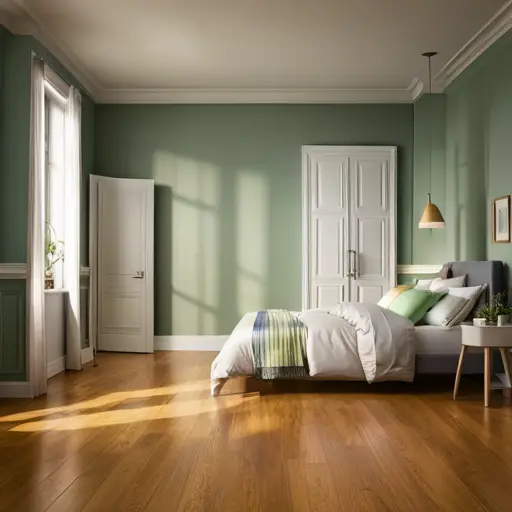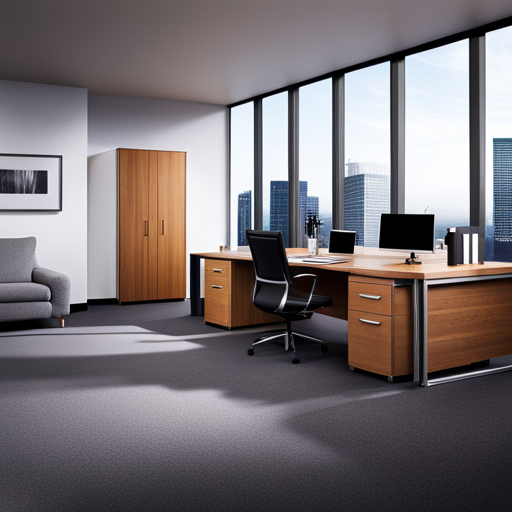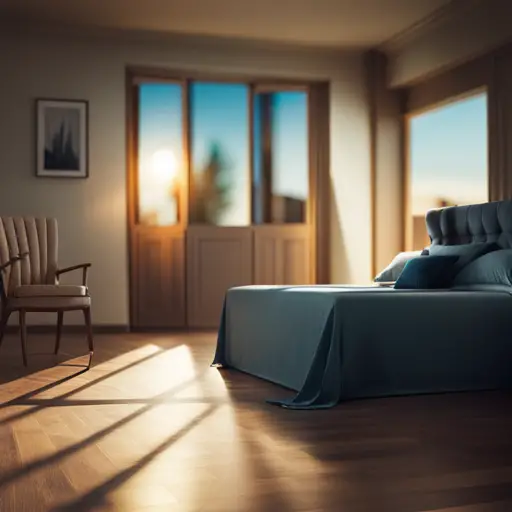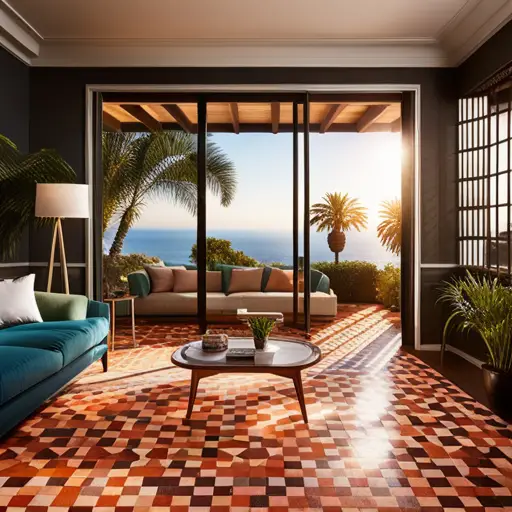How to Choose Flooring to Complement Your Home’s Aesthetics
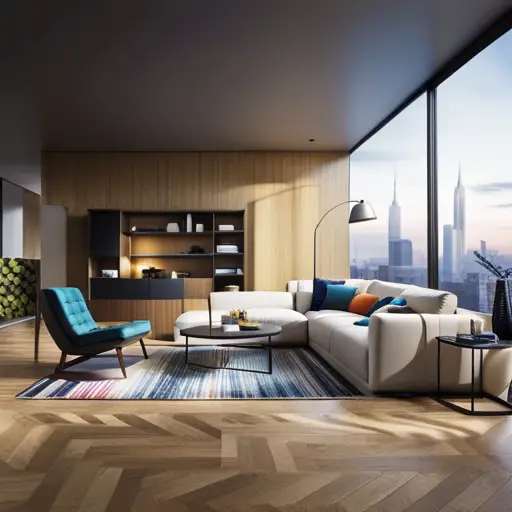
Discover the delicate dance of design and décor as we delve into the art of selecting flooring that flawlessly complements your home’s aesthetics.
From assessing your home’s style to integrating flooring with architectural features, this article offers a comprehensive guide to navigating color, tone, texture, and material options.
Explore the practicality and durability of different flooring choices, and harmonize with existing design elements to create a captivating and cohesive visual masterpiece.
Assessing Your Home’s Style
When choosing flooring to complement your home’s aesthetics, it is essential to begin by assessing your home’s style to ensure a cohesive and harmonious design. Assessing the space and home decor is crucial in determining the most suitable flooring option.
The first step is to evaluate the existing interior design elements such as furniture, wall color, and overall decor theme. For instance, if your home boasts a modern and minimalist style, sleek and polished flooring like hardwood or tiles may be the perfect fit. On the other hand, a rustic or traditional home decor scheme could be complemented by warm and natural flooring options like laminate or engineered wood.
It’s also important to consider the functionality of the space. High-traffic areas like the living room or kitchen might benefit from durable and easy-to-clean flooring, while bedrooms could prioritize comfort and warmth.
Understanding Color and Tone
An integral aspect of choosing flooring to complement your home’s aesthetics is understanding the role of color and tone in creating a cohesive design scheme that harmonizes with the existing interior style and functionality of the space.
Color psychology plays a significant role in the selection of flooring, as different colors can evoke specific emotions and moods. For instance, cool tones like blues and greens can create a calming and serene atmosphere, while warm tones such as reds and yellows can add energy and warmth to a room.
When considering flooring trends, it’s important to note that light-colored floors can make a space feel more open and spacious, while dark-colored floors can add a sense of coziness and intimacy.
In today’s interior design landscape, neutral tones are particularly popular for flooring as they provide a timeless and versatile backdrop for various decor styles. However, bold and vibrant flooring options are also gaining traction, especially in modern and eclectic interiors.
Understanding the impact of color and tone on flooring choices is crucial for achieving a harmonious and visually appealing home design.
As we delve into the significance of color and tone in flooring selection, it’s essential to recognize that texture and pattern also play pivotal roles in shaping the overall aesthetic of a space.
Exploring Texture and Pattern
When choosing flooring, considering the texture can greatly impact the overall visual appeal of the space. Textures can add depth, warmth, and visual interest to a room.
Additionally, incorporating patterns can further enhance the aesthetics by adding a touch of personality and charm. Balancing different textures and patterns is key to achieving a cohesive and visually appealing flooring design.
Texture for Visual Impact
As you explore options for flooring to complement your home’s aesthetics, it’s essential to consider the visual impact that texture and pattern can bring to the overall design.
Creating depth and visual contrast through flooring texture can significantly enhance the ambiance of a space. The tactile experience of walking on different textures, such as the smoothness of hardwood or the plushness of carpet, adds an additional layer of sensation to the design.
By incorporating various textures, you can create visual interest and a sense of dimension within the space. Whether aiming for a cozy, inviting atmosphere or a sleek, modern look, the right combination of textures can elevate the overall aesthetic of your home.
Consider how texture can be used to evoke a specific mood or style, and let it play a pivotal role in your flooring choices.
Pattern to Add Interest
Continuing our exploration of texture for visual impact, the addition of pattern to flooring can further enhance the visual interest and overall aesthetic of a space. Patterns create a visual illusion, adding depth and character to the flooring.
Geometric shapes, in particular, can bring a modern and sophisticated touch to the room, creating a sense of movement and energy. Chevron and herringbone patterns, for instance, can make a space feel dynamic and visually intriguing.
Furthermore, intricate patterns can serve as a focal point, drawing attention to specific areas of the room. When choosing patterns for flooring, it’s essential to consider the existing decor and overall style of the home.
Balancing Textures and Patterns
Exploring texture and pattern in flooring design involves carefully balancing different textures and patterns to create a cohesive and visually appealing aesthetic for your home.
When considering texture and color, it’s essential to strike a harmonious balance between rough and smooth surfaces, as well as light and dark hues. Incorporating varied textures, such as the softness of carpet, the sleekness of hardwood, or the warmth of natural stone, can add depth and visual interest to a space.
Furthermore, paying attention to pattern and scale is crucial. Mixing patterns of varying scales, such as pairing a large-scale geometric pattern with a smaller, more intricate design, can add dynamism without overwhelming the eye.
Considering Material Options
When selecting flooring to complement your home’s aesthetics, it is essential to carefully consider the material options available. Cost considerations play a significant role in the decision-making process. Some materials, such as hardwood, may have a higher initial cost but can add substantial value to your home. On the other hand, laminate and vinyl flooring offer cost-effective alternatives without compromising on aesthetics.
Environmental impact is another crucial factor to ponder. Opting for sustainable materials like bamboo or cork can reduce your carbon footprint and contribute to a greener environment.
Maintenance requirements should not be overlooked. While hardwood flooring exudes elegance, it demands regular maintenance to preserve its allure. Conversely, materials like ceramic tile or luxury vinyl require minimal upkeep, making them ideal for busy households.
Additionally, the installation process is a key consideration. Hardwood and tile installations can be labor-intensive and may require professional assistance, whereas laminate and vinyl planks often feature straightforward click-and-lock mechanisms, making them suitable for DIY enthusiasts.
Factoring in Practicality and Durability
Practicality and durability are paramount considerations when selecting flooring to complement your home’s aesthetics, as they dictate the long-term functionality and resilience of the chosen material. Adhering to these principles ensures that the flooring not only enhances the visual appeal of the space but also withstands the demands of daily use, thereby contributing to the overall ambiance of the home.
When factoring in practicality and durability, consider the following:
-
Traffic Patterns: Choose flooring materials that can withstand the specific traffic patterns in each area of your home, ensuring longevity and minimizing wear and tear.
-
Maintenance Requirements: Opt for flooring options that align with your lifestyle and maintenance preferences, striking a balance between practicality and aesthetic appeal.
-
Climate and Environmental Factors: Take into account the climate and environmental conditions of your region to select flooring materials that can endure fluctuating temperatures and humidity levels while maintaining their style and functionality.
Harmonizing With Existing Design Elements
To achieve a seamless integration with the existing design elements in your home, it is essential to consider how the chosen flooring will complement and enhance the overall aesthetic appeal of the space. Color coordination plays a vital role in creating a harmonious atmosphere. The flooring should either match the existing color scheme or provide a complementary contrast that adds visual interest.
For instance, if your home features warm earthy tones, selecting flooring with similar undertones can create a sense of continuity and warmth. On the other hand, if your design elements are predominantly neutral, introducing a pop of color through the flooring can infuse energy into the space.
Design compatibility is equally important. If your home boasts a contemporary design, sleek and polished flooring options like hardwood or polished concrete can seamlessly blend in. Conversely, a traditional interior may benefit from the warmth of wooden floors or the intricate patterns of ceramic tiles.
Integrating Flooring With Architectural Features
In harmonizing flooring with architectural features, careful consideration of the structural elements is essential to ensure a cohesive and visually appealing integration. When integrating flooring with architectural features, there are several key considerations to keep in mind:
-
Flooring and Arches: Arches are timeless architectural features that add elegance and sophistication to a space. When selecting flooring to complement arches, it’s important to consider the curvature and style of the arch. For pointed arches, a herringbone patterned hardwood floor can accentuate the shape, while for rounded arches, a curved tile or patterned carpet can enhance the fluidity of the design.
-
Blending Flooring with Columns: Columns are significant architectural elements that can greatly impact the overall aesthetics of a space. To seamlessly blend flooring with columns, it’s crucial to choose materials and patterns that complement the style of the columns. For grand, classical columns, marble or polished stone flooring can elevate the luxurious ambiance, while sleek, modern columns may be complemented by minimalist, monochromatic flooring options.
Seeking Professional Guidance
Professional guidance from experienced interior designers or flooring specialists can provide valuable insights into selecting flooring that complements the architectural features of your home. When seeking professional input, it’s crucial to consider both budget considerations and personal preferences.
Expert advice can help align your vision with practical possibilities while ensuring that the chosen flooring not only enhances the aesthetics of your home but also fits within your financial constraints.
Interior designers can offer comprehensive guidance, taking into account your personal style and the existing architectural elements of your home. They can provide tailored recommendations that suit both your preferences and the overall design scheme.
Flooring specialists, on the other hand, can offer in-depth knowledge about different flooring materials, their durability, maintenance requirements, and compatibility with specific architectural styles.
Frequently Asked Questions
How Can I Use Flooring to Create a Sense of Flow Between Different Areas of My Home?
Creating visual continuity in your home’s flooring can be achieved by selecting materials that seamlessly transition between spaces. Consider using a consistent color palette or flooring type to create a sense of flow throughout your home.
What Are Some Creative Ways to Incorporate Eco-Friendly Flooring Options Into My Home’s Design?
Incorporating eco-friendly flooring options into your home’s design can significantly reduce your environmental impact. Sustainable materials such as bamboo, cork, and reclaimed wood offer a beautiful and environmentally conscious solution while embracing biophilic design.
Are There Any Flooring Options That Can Help to Improve Indoor Air Quality?
Improving indoor air quality is crucial for a healthy home. Sustainable flooring options like cork and bamboo not only enhance aesthetics but also contribute to cleaner air by emitting fewer VOCs, making them a wise choice.
What Are Some Unique Flooring Materials or Designs That Can Add a Touch of Luxury to My Home?
When seeking luxury options and opulent designs for your home, consider high-end materials like marble or exotic hardwoods. Geometric patterns or custom inlays can add a touch of grandeur, elevating your space to new levels of sophistication.
How Can I Use Flooring to Make a Small Room Appear Larger and More Spacious?
When aiming to make a small room appear larger and more spacious, color selection and lighting techniques play pivotal roles. Strategic furniture placement and optical illusions through flooring patterns can also significantly impact the perception of space.
Conclusion
In conclusion, the choice of flooring for your home is a crucial decision that should complement the overall aesthetics and style of your space. By considering factors such as color, texture, material, practicality, and existing design elements, you can create a harmonious and visually appealing environment.
Seeking professional guidance can also provide valuable insight and ensure that your flooring choice enhances the architectural features of your home. Choose wisely and transform your space into a stunning masterpiece.

Rubin Everest, a seasoned expert in the world of flooring, brings a wealth of knowledge and passion to the surface. As the mind behind ebbow.com, Rubin is dedicated to sharing insights on the latest trends, innovative solutions, and expert advice in the realm of flooring. Whether you’re seeking practical tips for installation or design inspiration, Rubin Everest is your go-to source for all things flooring-related, making your journey to the perfect floor an informed and enjoyable experience.

